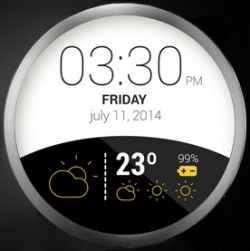
The Internet of Things (IoT) simply refers to the automatic connection and communication between systems and devices. As we gain a better grasp of where and how the the Internet of Things is impacting society most, it’s become clear that various aspects of health, safety, and security are the priorities.
The ability for devices and automated systems to communicate, record and analyze data, and optimize functionality holds enormous potential to improve our quality of life. The most recent example of progress is in a report by MarketWatch that suggests the global market for Internet of Things systems related to digital security is on pace to exceed $28.9 billion by the year 2020.
That’s a pretty mind-blowing number, and it speaks to the significance (and business potential) of improved digital security systems. Basically, these systems include identity protection, device security, file encryption, and cloud securities, all sectors that contribute to protecting the personal information of individuals and companies alike.
A $28.9 billion market would certainly be among the largest of those being created by the evolution of the Internet of Things, but the information security sector is by no means the only one already on pace for significant growth in the coming five years or so. We’re seeing significant Internet of Things expansion in the following areas, too.
Arguably the most exciting application of the Internet of Things for the general public, the idea of a "smart home" seemed tech-y and vaguely futuristic just a few years ago. Now, it’s an ever-expanding reality that exemplifies the potential of the Internet of Things on a smaller scale (as opposed to the vast world that comprises digital security).
The idea is that intelligent devices within the home connect together to keep your environment safe, comfortable, energy-efficient, and optimized to your preferences. Security, climate control, utility usage, and entertainment are all under the umbrella of the smart home concept. With all kinds of companies beginning to sell the products and systems needed to make it happen, a 2014 VentureBeat article claimed that this will be a $71 billion market by 2018!
While home systems make perfect sense to a growing consumer base that’s used to seeing related products in stores, vehicle fleet regulation is an enormous branch of Internet of Things implementation that is less familiar to the public. Yet when you consider the potential of linking up fleets to each other and to company bases through WiFi and GPS tracking, the implications are far-reaching.
As illuminated in a report by Networkfleet, such connectivity can help businesses with "making more informed dispatching decisions, monitoring fuel economy, vehicle maintenance," and more. With these benefits spread across the innumerable businesses that still utilize vehicle fleets, it’s clear that the potential market size for devices in this area is gigantic.
Healthcare is one of the most expansive and influential sectors in which the Internet of Things is becoming relevant, and to some extent that’s because it’s being utilized in hospital data sharing. However, as Forbes noted in an article last year, there are also numerous unique applications of Internet of Things principles in personal healthcare.
That article touched on infant monitors, insulin trackers for diabetics, smart diapers that can detect infections, and even smart pills that can help to record whether or not medication is being used appropriately. We’re also seeing fitness trackers and other wearable technologies significantly improve the ways in which we monitor exercise and basic health. Personal health management ultimately has the potential to bring about some of the most significant use of smart products alongside the implementation of the Internet of Things.
Considering all of these examples, it’s anyone’s guess how many billions go into the expansion and improvement of the Internet of Things in the next five years. It’ll definitely be interesting to watch it all unfold.
